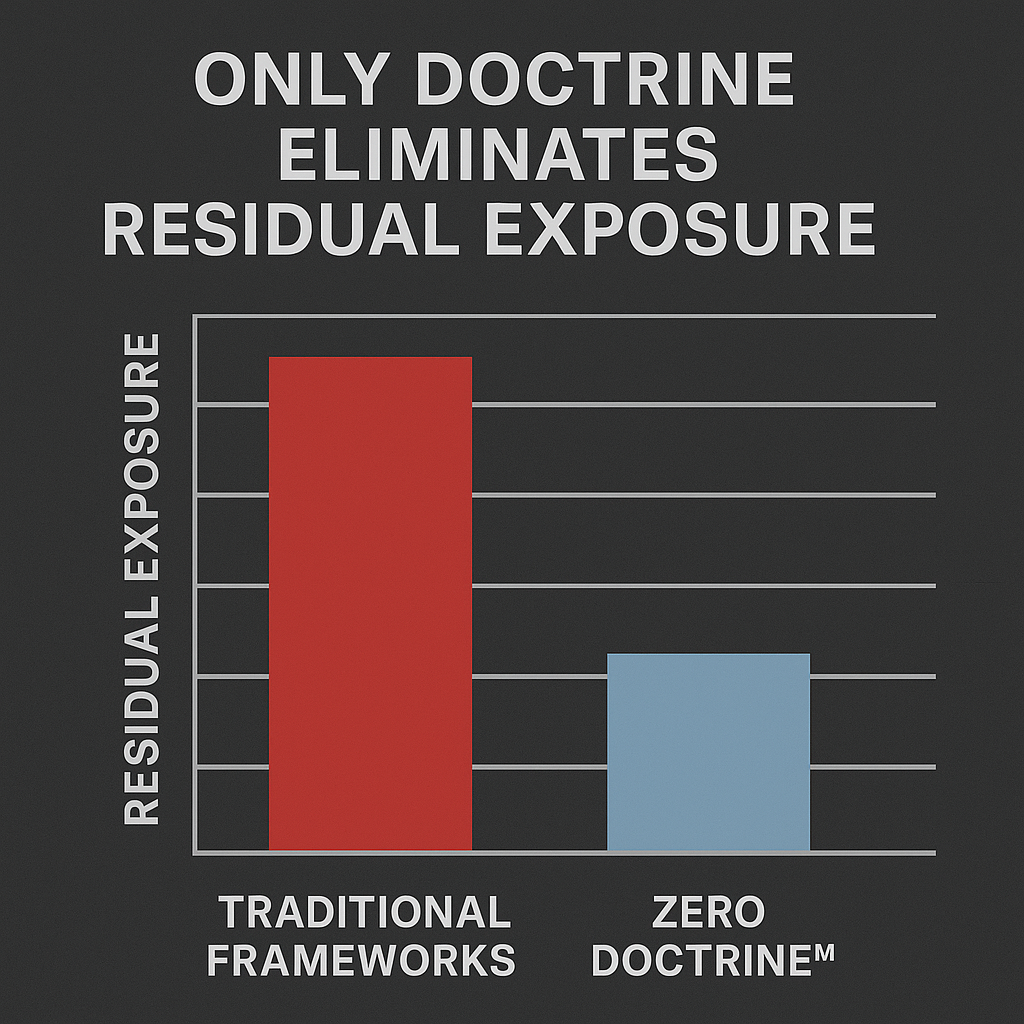Sovereign Cyber Doctrine for National Defense
Only doctrine enforces sovereignty.
The Problem
-
NIST and Zero Trust help create guardrails — but they do not eliminate foreign vectors, nor do they establish supreme governance.
-
Vendor-driven solutions fragment national security into silos.
-
The public internet remains treated as an operational necessity instead of a deception terrain.
This leaves agencies exposed to:
-
Power disruption attacks
-
Insider cultural drift
-
Supply chain infiltration
-
Cloud service compromise

The Doctrinal Solution
Proof of Enforcement
The Cybersecurity Constitution™ enforces sovereign-grade protection across all government systems.
-
Article I: Digital Sovereignty – Defines control of national digital territory.
-
Article II: Architecture – Establishes enclave and Multi-Net™ segmentation.
-
Article V: Identity & Trust – Prohibits foreign-origin technical input.
-
Article VI: LAWS™ – Extends protection across Land, Air, Water, Space.
Backed by embedded protocols:
-
🧬 DNA™ – Data compartmentalization
-
🛰 STEALTH™ – Air-gapped zones for Zero Internet operations
-
🤖 TitanAI™ – AI-driven threat prediction
-
🌐 TrustNet™ – Governance, identity, and compliance
-
NIST and Zero Trust help create guardrails — but they do not eliminate foreign vectors, nor do they establish supreme governance.
-
Vendor-driven solutions fragment national security into silos.
-
The public internet remains treated as an operational necessity instead of a deception terrain.
This leaves agencies exposed to:
-
Power disruption attacks
-
Insider cultural drift
-
Supply chain infiltration
-
Cloud service compromise
Government adoption of the Zero Doctrine™ is already projected at 72–85% readiness.
-
SecureTrain™ SnapSim validates real-world crisis readiness.
-
Resilience Matrix proves coverage against power, insider, and supply chain risks.
-
Red Team Doctrine Brief shows how even hypothetical adversarial tactics collapse under doctrinal safeguards.
Engagement Path
The only entry path to doctrinal adoption is through staged enforcement:
1️⃣ Book a Doctrinal Briefing → Understand how sovereignty replaces compliance.
2️⃣ Run a SnapSim → Test your agency’s crisis response against Zero Doctrine™ standards.
3️⃣ Adopt the Doctrine → Deploy the Cybersecurity Constitution™ as supreme governance.
[Book a Doctrinal Briefing →]
Footer Note
⚖️ The Cybersecurity Constitution™ is the supreme doctrinal authority for sovereign-grade cybersecurity. It prevails over frameworks, vendor policies, and procedural convenience.
